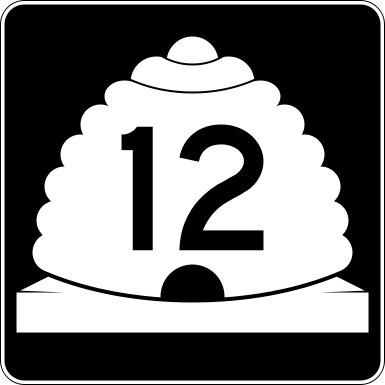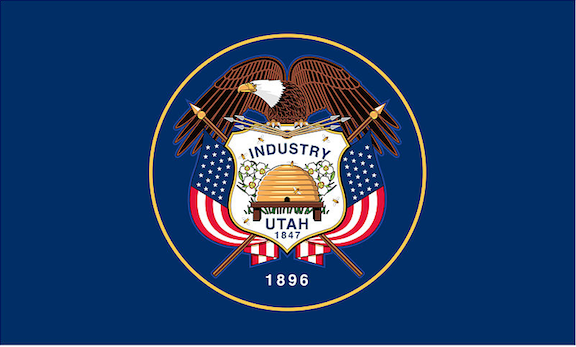Beehive Symbol
The image of a beehive is easily recognizable as a symbol adopted in the early years of The Church of Jesus Christ of Latter-day Saints. Its significance comes from the book of Ether found in the Book of Mormon:
- And they did also carry with them Deseret, which, by interpretation, is a honey bee; and thus they did carry with them swarms of bees (Ether 2:3).
According to Susan Easton Black, “The honeybee, depicted on heroic-sized beehives, is seen atop such prominent buildings as the Beehive House and Joseph Smith Memorial Building in downtown Salt Lake City. Smaller replicas of the beehive have been stamped on license plates, park benches, and other objects. Monuments and souvenirs galore tout the beehive as the symbol of Salt Lake City much as Atlanta claims the peach as its symbol. To Latter-day Saint residents of Salt Lake City, the beehive is more than a symbol of the city as a home of hard workers or of industry. The beehive symbol was Brigham Young’s way to remind residents of the Jaredite civilization in America.”[1]
To Brigham Young, the honeybees and their hives suggested “cooperative labor and industry.”[2] The beehive came to be a symbol for both the State of Utah and The Church of Jesus Christ of Latter-day Saints. Mark Twain wrote in his 1872 book Roughing It: “The Mormon crest was easy. And it was simple, unostentatious and it fitted like a glove. It was a representation of a Golden Beehive, with all the bees at work.”[3]
Brigham Young linked the words beehive and Deseret when the Saints were settled in the Great Salt Lake Valley and intended that the territory of Utah be named Deseret.
According to Susan Easton Black, “Linking deseret with the symbol of the beehive was short-lived in a temporal sense. The 1872 federal rejection of the State of Deseret greatly weakened the connection between deseret and the beehive. It was further weakened when government officials of the State of Utah, several being Latter-day Saints, embraced the beehive symbol and rejected the term Deseret. For example, on April 3, 1896, the Great Seal of the State of Utah was adopted. The seal incorporates the word industry and an ornate beehive. Prominently displayed on the state flag is also the word industry. In the center of the flag’s shield is a beehive. On March 4, 1959, the beehive became the official state emblem. On that same date, the state motto ‘Industry’ was adopted.”[4]
Deseret is now known as a trademark for Church-owned entities.[5] See also Deseret.
Residents of the United States may or may not know that each state bears a nickname. Some states have more than one, and some states’ nicknames are not official. Utah’s nickname is the Beehive State[6] and a beehive is featured on the Utah coat of arms in the center of the state flag.[[7] The suggested commemorative flag design also incorporates the symbol of the beehive.[8] [9] Utah state highway markers also bear the symbol of a beehive.
Residents of Utah are so accustomed to the symbol, they have come to take it for granted or hardly notice it. But as writer Mary Brown Malouf notes, “the beehive has become an everyday icon that links present-day Utahns—Mormon and non-Mormons—with their pioneer past.”[10]


